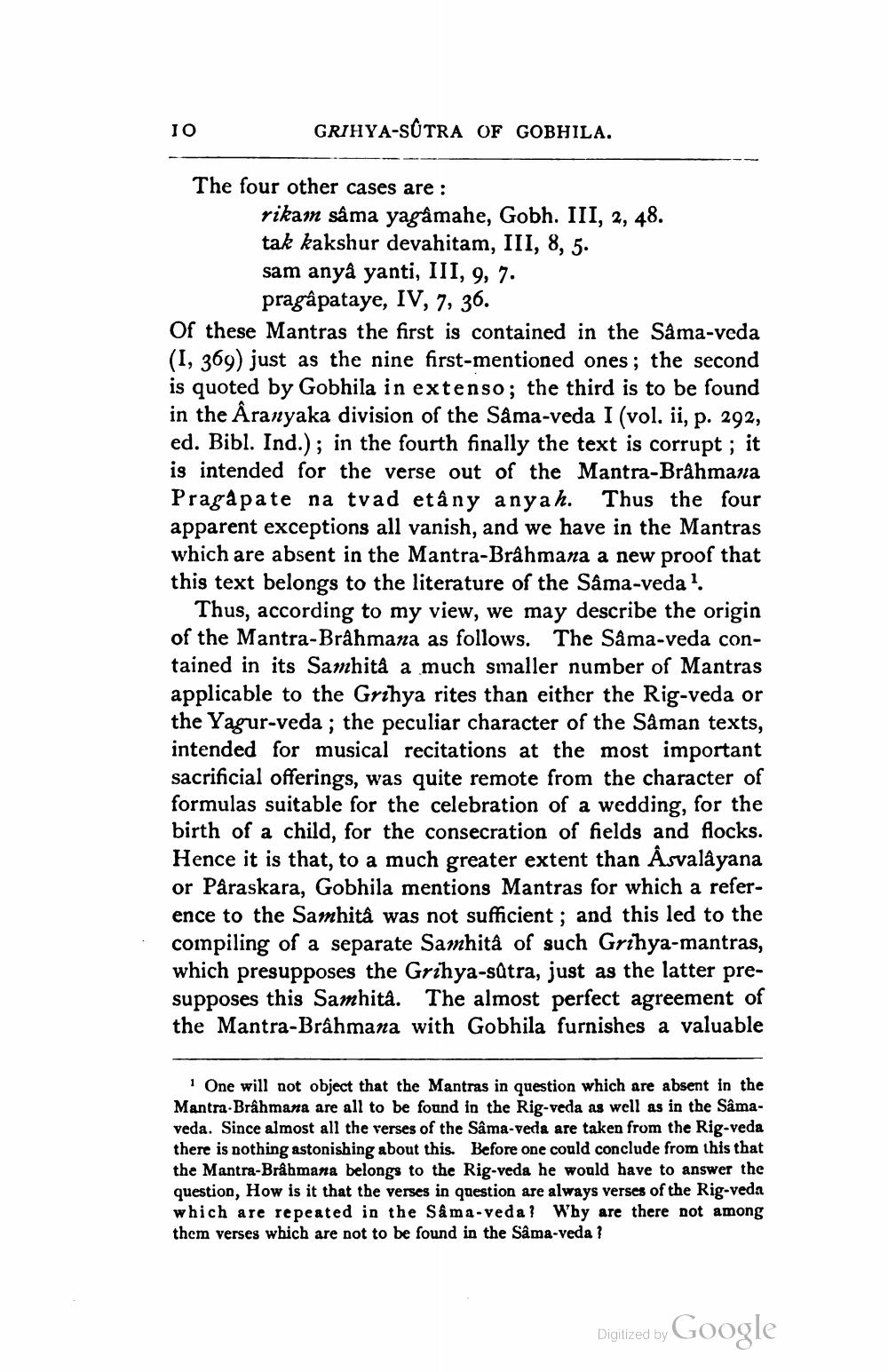________________
IO
GRIHYA-SUTRA OF GOBHILA.
The four other cases are:
rikam sâma yagâmahe, Gobh. III, 2, 48. tak kakshur devahitam, III, 8, 5.
sam anyâ yanti, III, 9, 7.
pragâpataye, IV, 7, 36.
Of these Mantras the first is contained in the Sâma-veda (I, 369) just as the nine first-mentioned ones; the second is quoted by Gobhila in extenso; the third is to be found in the Âranyaka division of the Sâma-veda I (vol. ii, p. 292, ed. Bibl. Ind.); in the fourth finally the text is corrupt; it is intended for the verse out of the Mantra-Brahmana Pragapate na tvad etâny anyah. Thus the four apparent exceptions all vanish, and we have in the Mantras which are absent in the Mantra-Brahmana a new proof that this text belongs to the literature of the Sâma-veda1.
Thus, according to my view, we may describe the origin of the Mantra-Brahmana as follows. The Sâma-veda contained in its Samhitâ a much smaller number of Mantras applicable to the Grihya rites than either the Rig-veda or the Yagur-veda; the peculiar character of the Sâman texts, intended for musical recitations at the most important sacrificial offerings, was quite remote from the character of formulas suitable for the celebration of a wedding, for the birth of a child, for the consecration of fields and flocks. Hence it is that, to a much greater extent than Âsvalâyana or Pâraskara, Gobhila mentions Mantras for which a reference to the Samhitâ was not sufficient; and this led to the compiling of a separate Samhitâ of such Grihya-mantras, which presupposes the Grihya-sûtra, just as the latter presupposes this Samhita. The almost perfect agreement of the Mantra-Brahmana with Gobhila furnishes a valuable
1 One will not object that the Mantras in question which are absent in the Mantra-Brahmana are all to be found in the Rig-veda as well as in the Sâmaveda. Since almost all the verses of the Sâma-veda are taken from the Rig-veda there is nothing astonishing about this. Before one could conclude from this that the Mantra-Brahmana belongs to the Rig-veda he would have to answer the question, How is it that the verses in question are always verses of the Rig-veda which are repeated in the Sâma-veda? Why are there not among them verses which are not to be found in the Sâma-veda ?
Digitized by
Google




